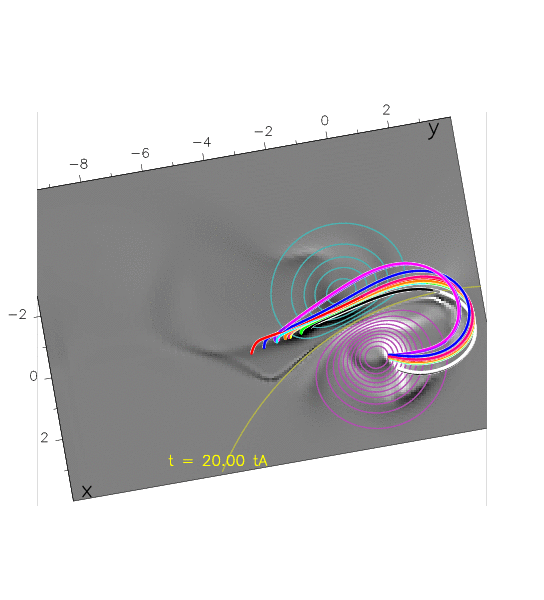
After its discovery in 2006 by solar physicists of the Laboratory for Space Studies and Astrophysical Instrumentation of the Paris Observatory, and its integration in 2013 in their 3D solar eruption model, the phenomenon of « sliding reconnection » has been observed very infrequently, and, till now, never within solar eruptions.
This phenomenon was detected for the first time in an intense class X solar eruption, on July 12th 2012, thanks to the AIA instrument on NASA’s SDO satellite, which operates in the extreme ultra-violet domain.
The video shows the sliding of the magnetic field lines (or loops) twisted above the stellar surface, which is the characteristic signature of energy being liberated during sliding reconnection. Growing in importance, the latter finally extends over a group of sunspots, and gives rise to a powerful eruption. An analysis covering a range of wavelengths observed by AIA shows that at this moment the temperature in the loops reaches almost 20 million degrees.
The dynamics obseved on the Sun does recall somewhat what can be seen the polar aurorae as observed from the international space station : this raises the question of whether such phenomena could be taking place in the terrestrial atmosphere.
This discovery, published on-line in the March 2014 edition of « The Astrophysical Journal », was found by an international team of scientists which includes two Paris Observatory astronomers.
This result should help solar physicists to better understand the underlying mechanisms of solar eruptions, and, in the end, to predict where and when they will occur. This will constitute a significant step for dundamental research, with consequences for applied research, knowing the damage caused by space meterology to satellites, to telecommunication systems, and the radiation risks to astronauts and to flight personnel generally.

